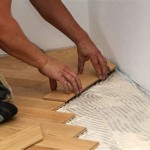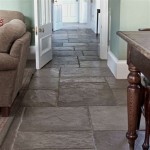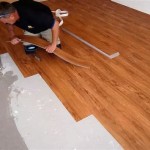```html
Tongue And Groove Bamboo Flooring Installation: A Comprehensive Guide
Tongue and groove bamboo flooring offers a durable and aesthetically pleasing alternative to traditional hardwood. Its sustainable sourcing and unique grain patterns make it a popular choice for both residential and commercial spaces. However, successful installation is crucial for achieving a long-lasting and visually appealing result. This article provides a detailed guide to installing tongue and groove bamboo flooring, outlining essential steps, tools, and considerations for a professional-quality outcome.
Before commencing the installation process, proper planning and preparation are paramount. This initial phase significantly impacts the overall success and longevity of the flooring. Neglecting these preliminary steps can lead to issues such as uneven surfaces, gaps, and eventual structural problems. Therefore, a meticulous approach to preparation is highly recommended.
Acclimation of Bamboo Flooring
Acclimation is the process of allowing the bamboo flooring to adjust to the ambient temperature and humidity conditions of the installation environment. Bamboo, like all wood products, expands and contracts in response to changes in moisture content. Failure to acclimate the flooring can result in warping, cupping, or gapping after installation.
The recommended acclimation period varies depending on the specific bamboo flooring product and the environmental conditions. However, a general guideline is to allow the unopened boxes of flooring to rest in the installation area for at least 72 hours, and ideally for five to seven days. During this time, it is critical to ensure that the temperature and humidity levels are consistent with the typical living conditions of the space. The ideal temperature range is between 60°F and 80°F, and the relative humidity should be between 30% and 50%. Use a hygrometer to monitor the humidity levels regularly.
Stack the boxes of bamboo flooring in a cross-stacked pattern to allow for adequate air circulation around each plank. Avoid placing the boxes directly against walls or in areas exposed to direct sunlight or drafts. If the humidity is excessively high, consider using a dehumidifier to lower the moisture content. Conversely, if the air is too dry, a humidifier can help to raise the humidity levels.
Document the acclimation process by recording the temperature and humidity readings daily. This record can serve as proof that the flooring was properly acclimated, which may be required for warranty claims. The goal is to achieve an equilibrium moisture content between the flooring and the surrounding environment, thereby minimizing the risk of post-installation problems.
Subfloor Preparation
The subfloor is the foundation upon which the bamboo flooring will be installed. A level, clean, and structurally sound subfloor is essential for achieving a smooth and stable flooring surface. Any deficiencies in the subfloor can telegraph through the bamboo flooring, resulting in an uneven or unstable installation.
Begin by thoroughly inspecting the subfloor for any signs of damage, such as cracks, holes, or loose boards. Repair any imperfections before proceeding. For concrete subfloors, use a self-leveling compound to fill in any low spots or irregularities. Ensure that the concrete is clean, dry, and free of any debris or contaminants. Apply a vapor barrier to prevent moisture from migrating up through the concrete and damaging the bamboo flooring.
For wood subfloors, reinforce any weak or loose areas. Securely fasten any squeaking or creaking boards. Check for any signs of rot or water damage and replace any affected areas. Use a belt sander to smooth out any unevenness or ridges in the wood subfloor. Ensure that the subfloor is clean and free of any nails, screws, or other obstructions.
Regardless of the subfloor type, it is crucial to ensure that it is level. Use a long level or a straightedge to check for any deviations. The general rule of thumb is that the subfloor should be level to within 3/16 inch over a 10-foot span. If the subfloor is not level, it will need to be corrected before installing the bamboo flooring. Failure to do so can result in an uneven flooring surface, which can be both unsightly and structurally unsound.
After the subfloor has been properly prepared, clean it thoroughly to remove any dust, dirt, or debris. Use a vacuum cleaner or a broom to sweep the entire area. A clean subfloor ensures a proper bond between the bamboo flooring and the subfloor adhesive or underlayment.
Installation Techniques and Tools
The installation of tongue and groove bamboo flooring requires precision and attention to detail. Utilizing the correct techniques and tools is crucial for achieving a professional-quality result. There are generally two primary methods for installing tongue and groove bamboo flooring: gluing and floating. The choice of method depends on the specific bamboo flooring product, the subfloor type, and the installer's preference.
Gluing: The gluing method involves applying adhesive directly to the subfloor and then pressing the bamboo flooring planks into the adhesive. This method provides a strong and permanent bond between the flooring and the subfloor, resulting in a highly stable and durable installation. This method is generally recommended for solid bamboo flooring.
When using the gluing method, it is important to select an adhesive that is specifically designed for bamboo flooring. Apply the adhesive evenly to the subfloor using a notched trowel. Follow the manufacturer's instructions regarding the amount of adhesive to apply and the open time. Place the bamboo flooring planks into the adhesive, ensuring that the tongue and groove joints are properly aligned. Use a tapping block and a rubber mallet to gently tap the planks together, creating a tight and seamless connection. Wipe away any excess adhesive immediately with a damp cloth.
Floating: The floating method involves installing the bamboo flooring over an underlayment without directly attaching it to the subfloor. The flooring planks are connected to each other using the tongue and groove joints, creating a single, interconnected surface that floats on top of the subfloor. This method is generally recommended for engineered bamboo flooring.
When using the floating method, it is essential to select an underlayment that provides adequate cushioning, sound insulation, and moisture protection. Roll out the underlayment over the subfloor, overlapping the seams slightly and taping them together. Place the bamboo flooring planks on top of the underlayment, ensuring that the tongue and groove joints are properly aligned. Use a tapping block and a rubber mallet to gently tap the planks together, creating a tight and seamless connection. Leave a small expansion gap around the perimeter of the room to allow for natural expansion and contraction of the flooring.
Essential Tools: Regardless of the installation method, certain tools are essential for installing tongue and groove bamboo flooring. These include a measuring tape, a pencil, a circular saw or a flooring cutter, a tapping block, a rubber mallet, a level, a spacer kit, a moisture meter, and safety glasses.
Start the installation along a straight wall, leaving the recommended expansion gap. Use spacers to maintain this gap. Work in rows, carefully aligning the tongue and groove joints. Cut the planks as needed to fit around obstacles such as pipes or doorways. Use a jigsaw for intricate cuts. Regularly check the flooring for levelness and correct any issues immediately. Once the installation is complete, remove the spacers and install baseboards or quarter-round molding to cover the expansion gap.
Proper ventilation is crucial during the installation process. Open windows and doors to allow for adequate airflow. Wear safety glasses to protect your eyes from dust and debris. Follow all manufacturer's instructions and safety guidelines. If you are unsure about any aspect of the installation process, consult with a professional flooring installer.
```
How To Install Bamboo Flooring Tongue Groove Over Underlay

Beginners Guide To Installing Bamboo Flooring The Company

What Is Tongue And Groove Bamboo Flooring The Company

Tongue And Groove Or Fitting Bamboo The Flooring Company

How To Install Bamboo Flooring Floated Diy Method

How To Install Bamboo Flooring Tongue Groove Over Underlay

4 Simple Ways To Install Bamboo Flooring On Plywood Wikihow Life

Beginners Guide To Installing Bamboo Flooring The Company

5 Essential Tips For Tongue And Groove Flooring District Floor Depot

How To Install Bamboo Flooring Floated Diy Method
Related Posts








